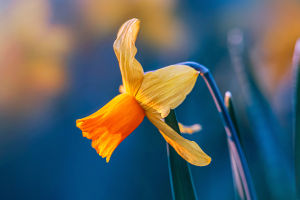Tulips are among the most beloved flowers in the world, known for their simple elegance and striking colors.
Originating from Central Asia, tulips became highly popular in the 17th century, particularly in the Netherlands, where "Tulip Mania" saw these flowers become a symbol of wealth and status.
Today, tulips are widely recognized as a symbol of spring and renewal, bringing vibrant beauty to gardens, parks, and homes.
History and Symbolism
The tulip’s journey from wildflower to cultivated beauty began in the Ottoman Empire, where they were admired for their vivid colors. Tulips were later brought to Europe, specifically to the Netherlands, where they became a massive hit in the 1600s. During the period known as "Tulip Mania," tulip bulbs were traded at extraordinary prices, sometimes worth more than a house! While the bubble eventually burst, tulips remained an iconic flower in Dutch culture and are still celebrated in festivals worldwide.
Tulips carry different meanings depending on their color:
- Red tulips symbolize love and passion.
- Yellow tulips are associated with happiness and sunshine.
- White tulips often represent purity and forgiveness.
- Purple tulips signify royalty and admiration.
- Pink tulips are linked to affection and good wishes.
Tulip Varieties
There are over 3,000 different varieties of tulips, classified into 15 different groups based on their shape, size, and blooming time. Some of the most popular varieties include:
Single Early Tulips: These tulips bloom early in the season and have simple, cup-shaped flowers in a variety of bright colors.
Double Late Tulips: Known for their peony-like flowers, double late tulips have multiple layers of petals and bloom later in the season.
Parrot Tulips: With ruffled, feathered petals, parrot tulips offer a unique and exotic look.
Triumph Tulips: These classic tulips are sturdy and available in a wide range of colors, making them ideal for gardens and flower arrangements.
Growing Conditions
Tulips are relatively easy to grow, making them a favorite among gardeners. Here’s how to ensure your tulips thrive:
Soil: Tulips prefer well-drained soil. They do not like to sit in water, as this can cause the bulbs to rot. Make sure the soil has good drainage or add sand to improve it.
Sunlight: Tulips grow best in full sunlight, which helps them develop strong stems and vibrant blooms. Plant them in a sunny spot for optimal results.
Planting Time: Tulip bulbs should be planted in the fall, about six to eight weeks before the first frost. This allows them to establish roots before the ground freezes.
Watering: After planting, water the bulbs thoroughly. Once established, tulips require minimal watering, as too much moisture can harm them.
Fertilizing: Adding a layer of compost or bulb fertilizer at planting time helps nourish the bulbs as they grow.
Blooming Season and Care
Tulips bloom in spring, typically from March to May, depending on the variety. To extend the blooming period, plant bulbs that flower at different times in the season. After blooming, allow the foliage to die back naturally, as this helps the bulbs store energy for the next year. If you’re growing tulips as perennials, make sure to replant every few years to ensure they continue producing strong, vibrant flowers.
Lykkers, Tulips are a timeless flower, loved for their beauty and variety. Whether you're planting them in your garden, using them in floral arrangements, or simply enjoying their cheerful presence, tulips bring color and life to any setting. Easy to grow and available in a wide range of colors and shapes, tulips are the perfect addition to celebrate the arrival of spring.
How to Grow Tulips | At Home With P. Allen Smith
Video by ehowhome


